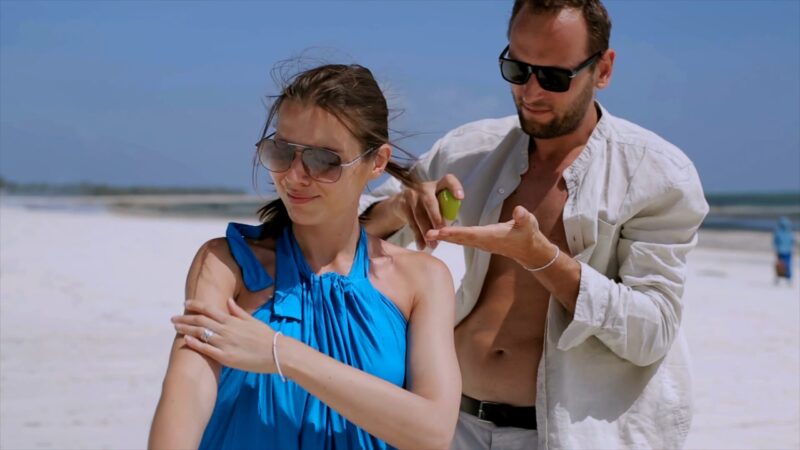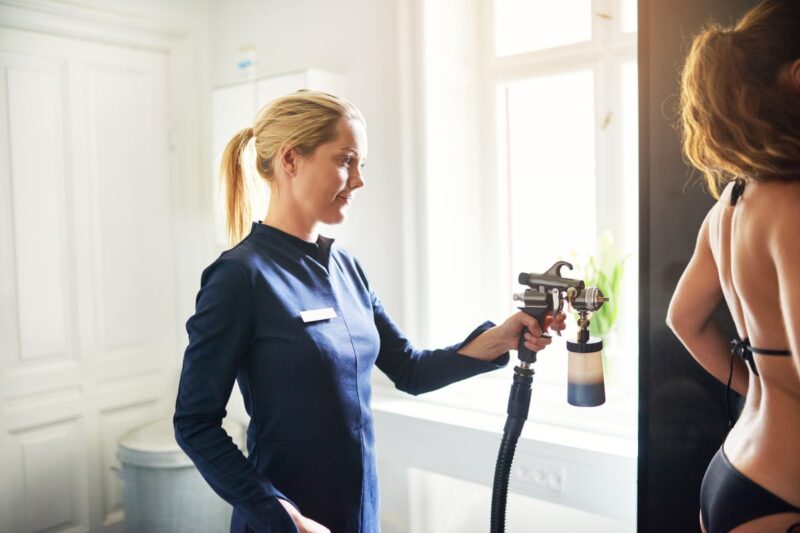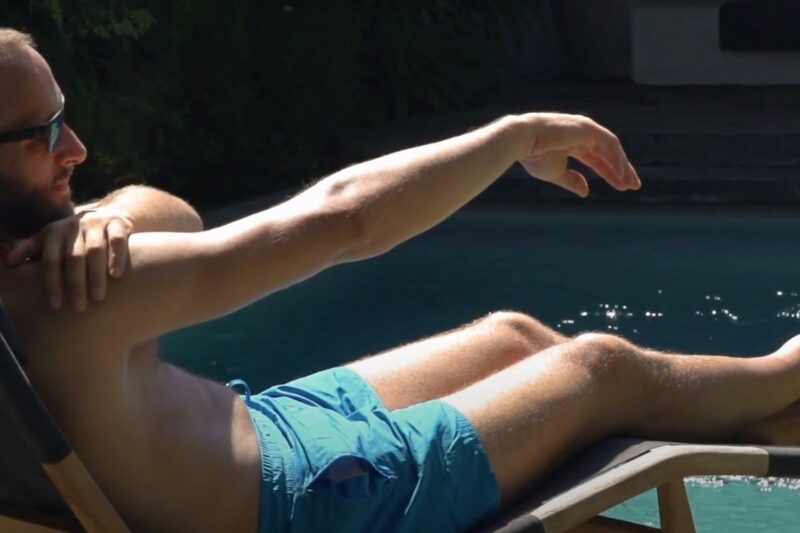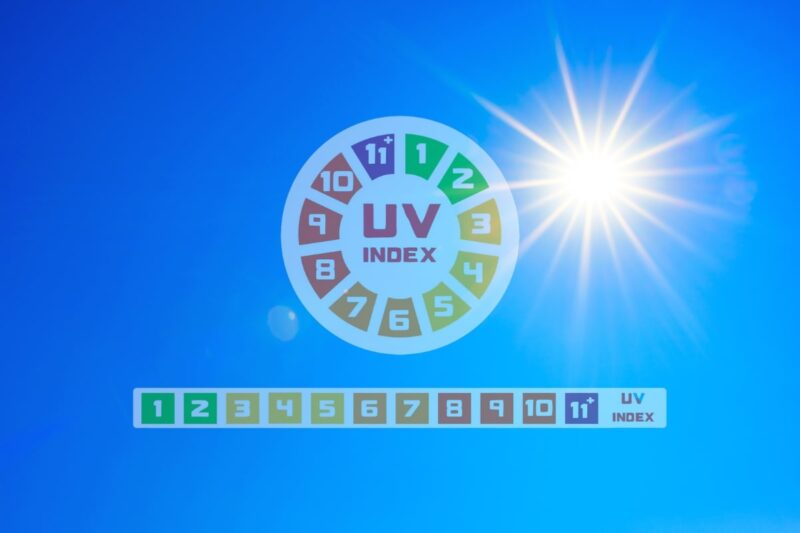Tanning is a topic that has been surrounded by myths and misconceptions for years. Many people believe that a tan gives them a healthy glow, but the truth is that any tan is a sign of skin damage.
The UV index plays a crucial role in understanding the intensity of ultraviolet rays from the sun. But can you get a tan with a UV index of 5?
Let’s dive deep into the subject.
What is the UV Index?
The UV Index, as provided by the US Environmental Protection Agency (EPA), offers a daily forecast of the expected intensity of ultraviolet (UV) radiation emanating from the sun. While some exposure to sunlight can be enjoyable, excessive exposure can be harmful.
Overexposure to the sun’s UV radiation can lead to immediate issues like sunburn and long-term problems such as skin cancer and cataracts.
Who Needs Protection?

It’s vital to understand that everyone, regardless of their skin type, needs protection from overexposure to the sun. However, not everyone faces the same level of risk.
For instance:
- Individuals whose skin always burns.
- Those with blond or red hair.
- People with blue, green, or gray eyes.
- Those with a history of severe sunburns during early childhood.
- Individuals with many moles or a family history of skin cancer.
These groups may be at a heightened risk of developing skin cancer. However, it’s essential to note that all individuals, irrespective of their skin type, are equally susceptible to eye damage from UV radiation.
The Importance of the UV Index
Understanding the UV Index is crucial as it helps individuals make informed decisions about their outdoor activities and the level of sun protection they need. For instance, on days when the UV Index is high, it might be advisable to limit outdoor activities during peak sun hours, wear protective clothing, and apply sunscreen more frequently.
The Reality of Tanning

A common misconception is that a tan represents good health. However, a tan is essentially a response to injury, as skin cells signal that they have been hurt by UV rays by producing more pigment. As emphasized by experts like Dr. Cindy Wassef and Dr. Susan Massick, there’s no such thing as a safe tan.
Even if the UV index is low, the skin can still get damaged, leading to long-term problems.
Protecting Yourself
Given the risks associated with UV radiation, it’s crucial to:
- Check the UV Index Daily: Before planning outdoor activities, check the UV Index to understand the day’s UV radiation levels.
- Use Sunscreen: Apply sunscreen generously and reapply it every two hours, especially after swimming or sweating.
- Wear Protective Clothing: This includes wide-brimmed hats, long-sleeved shirts, and sunglasses.
- Seek Shade: Especially during peak sun hours, usually between 10 a.m. and 3 p.m.
UV Index of 5: What Does It Mean?

A UV index of 5 is considered moderate. However, Dr. Cindy Wassef, assistant professor of dermatology at Rutgers Robert Wood Johnson Medical School, states, “There is no good UV index for tanning.”
In fact, she emphasizes that there’s no such thing as a safe tan. Even with a moderate UV index, the risks associated with tanning, such as premature aging and skin cancer, remain.
Sunless Tanning: A Safer Alternative – Expanded Insights

Sun-kissed skin is often associated with health and beauty, especially during events like prom or vacations. However, achieving this look through traditional tanning methods poses significant health risks.
Sunless tanning has emerged as a safer alternative, especially for those who wish to avoid the harmful effects of UV radiation.
The Science Behind Sunless Tanning
Sunless tanning products primarily contain dihydroxyacetone (DHA), a sugar that interacts with the amino acids in the skin’s dead cells to produce a temporary brownish pigment. This process gives the appearance of a tan without exposing the skin to UV radiation.
The resulting color typically lasts about five days and can be reapplied as desired.
Benefits of Sunless Tanning
- No UV Exposure: Unlike traditional tanning methods, sunless tanning does not expose the skin to harmful UV rays, reducing the risk of skin cancer and premature aging.
- Instant Results: Sunless tanning products provide immediate results, making them ideal for last-minute events or occasions.
- Customizable Shade: Users can control the depth of their tan by choosing products with varying DHA concentrations and by adjusting the frequency of application.
Precautions and Tips for Sunless Tanning
- Skin Preparation: For an even tan, exfoliate the skin with a scrub or loofah before application. This removes dead skin cells and ensures even absorption of the product.
- Follow Directions: Always follow the package instructions. For instance, it’s recommended to wait at least 12 hours after shaving before applying the product to avoid dark spots in hair follicles.
- Professional Options: For those seeking a more uniform tan, professional spray tans are available. These can be customized to the desired shade and are typically applied using an airbrush or automated booth.
- Safety First: While DHA is FDA-approved for topical applications, its use in aerosol spray form has been linked to side effects like rashes and dizziness. When receiving a professional spray tan, wear protective gear for the mouth, eyes, and nose to prevent ingestion or inhalation.
Risks of Tanning – Further Insights

Tanning, whether through sun exposure or indoor tanning beds, poses several risks:
- Accelerated Aging: UV radiation breaks down the skin’s collagen and elastin fibers, leading to premature aging signs like wrinkles, leathery skin, sagging, and age spots.
- Brown Spots: These are often the result of prolonged UV exposure and can be permanent.
- Skin Cancer: UV radiation is a proven human carcinogen. A single indoor tanning session before the age of 35 can increase melanoma risk by 75%. Other skin cancers, such as squamous cell carcinoma (SCC) and basal cell carcinoma (BCC), are also linked to UV exposure.
Protecting Your Skin – Additional Tips
Protection from UV radiation is paramount. Here are some additional tips:
- Broad Spectrum Sunscreen: Ensure your sunscreen protects against both UVA and UVB rays.
- Regular Reapplication: Sunscreen’s effectiveness diminishes over time, especially when swimming or sweating.
- Clothing: Wear UV-protective clothing, especially during peak sun hours.
- Comprehensive Protection: The Skin Cancer Foundation recommends a comprehensive sun protection approach, including seeking shade, wearing protective clothing, and using sunscreen daily.
FAQ
How do UVA and UVB rays affect the skin?
UVA rays penetrate deep into the skin, causing premature aging and some types of skin cancer. UVB rays can cause sunburns and, in extreme cases, certain forms of skin cancer.
What is the Fitzpatrick scale, and why is it important for tanning?
The Fitzpatrick scale classifies individuals based on skin color, eye color, and hair color. It helps determine one’s skin type and how it might react to sun exposure.
How does skin type influence tanning ability?
Individuals with darker complexions have more natural protection from the sun than those with lighter complexions. However, everyone should be cautious and use protective measures.
What precautions should be taken when tanning?
It’s essential to wear sunscreen with an SPF of 30 or higher, protective clothing, and avoid sun exposure during peak hours (10 am – 4 pm).
How can you calculate the optimal tanning time?
The best tanning time depends on skin type, sensitivity to sunlight, and the UV index. Starting with short exposure times and gradually increasing is recommended.
What factors can impact a tanning plan?
Time of year, weather conditions, skin type, medications, and geographical location can all influence how one should approach tanning.
Why is protective clothing important for tanning?
Clothing acts as an additional layer of protection against UV radiation. Tightly woven fabrics offer more protection than loosely knit ones.
How can one ensure safe and healthy sun exposure?
Using broad-spectrum sunscreen, wearing protective clothing, staying aware of peak UV times, and being mindful of daily sun exposure duration can ensure safe sun exposure.
Final Thoughts
While a UV index of 5 is moderate, it’s essential to understand that no level of UV exposure is entirely safe for tanning. Protecting your skin should always be a priority.
Embrace your natural skin tone and prioritize its health over temporary aesthetics. Remember, true beauty lies in healthy skin! –
UV Index of 5: What Does It Mean?
–
